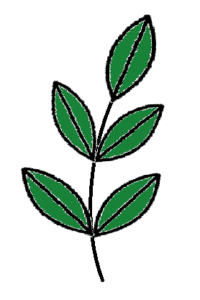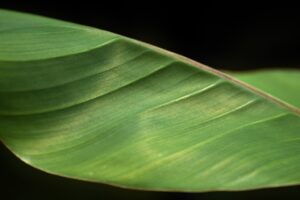The Leaf
Introduction
Plants are a very beneficial source for our domestic and even for our daily routine development. They contain various leaves, about which we are going to discuss.
We include the use of plants in almost everything that we do. They provide us: food grains, pulses, fruits, vegetables, sugar, tea, coffee, wood, medicines and many more things.
Leaves of all the plants can differ in their shape and size whereas; their attractive flowers can differ in shape, size and wonderful colours.
But, if we go in a detailed version of these plants, we will find two basic parts namely:
Shoot system
It consists of roots, stems, leaves, flowers and fruits (part above the soil).
Root system
It consists of roots (part below the soil).
Structure of the Leaf
A leaf is a thin, flat, green and broad outgrowth of a stem. Let’s go in the detail of the common structure present in all the leaves.

- Node –The point from where a leaf arises on the stem is called the node. Node also allows other branches to develop on the stem.
- Lamina (leaf blade) – The thin, flat and expanded part of the leaf which is clearly visible to our eyes whenever we see a leaf. Remember, this is the whole green part of the leaf.
- Leaf Margin – The edge of the lamina is called the margin of the leaf or leaf margin.
- Leaf Apex – A little pointed tip of the leaf is called the leaf apex.
- Petiole (Leaf Stalk) – The small cylindrical shaped stick in the bottom of the lamina and above the node is the petiole. Basically, it joins the lamina to the stem. Few leaves do not have a petiole and directly grow from the node. They are called sessile or epetiolate leaves.
- Midrib – You guys must have observed a thick line passing through the lamina of the leaves. This is the midrib. The midrib extends from the petiole till the leaf apex (tip).
- Veins and Veinlets – You all must have observed that the midrib takes out many zigzag type of lines called the veins. The veins further take out some thinner lines called the veinlets. The petiole, midrib, veins and veinlets together help to transport water from the stems to the leaves and the food prepared by the leaves to the complete plant.
- Leaf Base – The petiole has a slightly swollen part at it end called the leaf base.
Types of Leaves
Leaves are of two types: Simple and Compound Leaf. Let’s learn about these two in more detail.
Simple leaf – The leaves having a single leaf coming out of one node (one node = one leaf) is called a simple leaf. It has an axillary bud. For example, peepal, guava, mango and hibiscus. In plants like prickly poppy and cotton, the lamina has many cuts/incisions. However, these cuts are not that deep which could divide the lamina into several parts. For example, you can see the leaves of the guava plant, there is only one leaf coming out of one point on the stem (node).
Compound Leaf – The leaf in which the lamina is divided into many distinct parts called the leaflets is called a compound leaf. Compound leaves doesn’t have axillary buds. For example: neem, gulmohar, rose and Acacia.

Leaf Venations
The arrangement of veins and veinlets on the lamina of a leaf is called venation. The venations are of two types- reticulate and parallel venation.
Reticulate Venation
The venation in which the veins and veinlets are irregularly distributed throughout the lamina of the leaf, forming a network of lines, is called reticulate venation. Reticulate means ‘net-like’. For example: peepal, mango and guava have reticulate venation.
Parallel Venation
The venation in which the veins run parallel to each other are said to have parallel venation. For example: wheat, banana and grass.
Arrangement of Leaves on a Stem
The arrangement of leaves on a stem is phyllotaxy. Phyllotaxy differs from plant to plant. Alternate, opposite and whorled are types of arrangements in which we find arrangement of leaves.
Alternate Arrangement
The arrangement in which one leaf arises from one node and the leaves altogether form a spiral pattern is called the alternate arrangement. For example: sunflower, mango and China rose are having alternate type of arrangement.
Opposite Arrangement
In this kind of arrangement, two leaves arise from one node but the leaves grow opposite to each other. For example: guava and jasmine. On the other hand, the pairs of two leaves are placed at right angles to each other.
Whorled Arrangement
The arrangement in which many leaves (approximately 3 or more leaves) arise from one node forming a circle (whorl). For example-Nerium oleander (kaner) and Alstonia scholaris (devil tree).
Thank You Guys!
To test yourself on this chapter, click here to open an NCERT Getting to Know Plants MCQ PDF.


